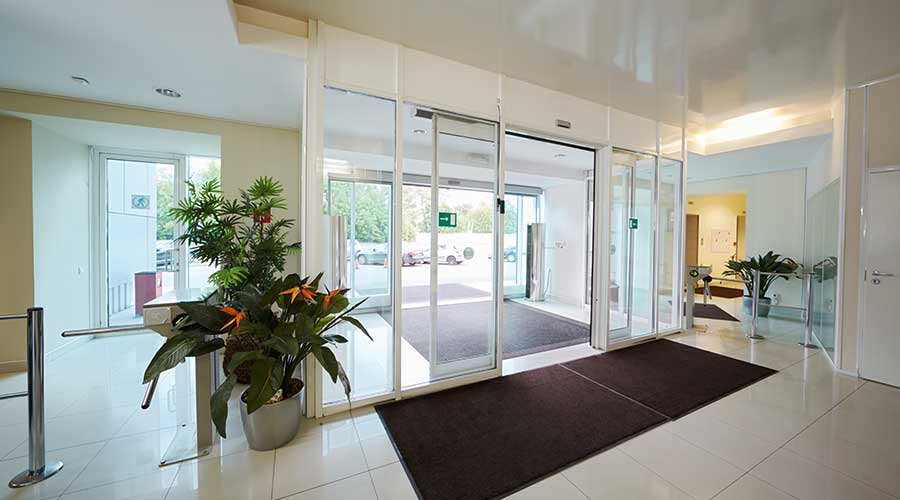Healthcare facilities managers understand the importance of hygiene protocols in every aspect of operations to prevent germ spread. This was true before COVID-19, and it has only become heightened since the pandemic. Automatic doors have been a crucial part of the hygienic mission of healthcare facilities by eliminating crucial touchpoints for staff and the public, but there are many ways automatic doors improve health and safety inside buildings.
According to the American Association of Automatic Door Manufacturers (AAADM), its industry is always evolving to meet the specific needs of healthcare facilities and medical environments. Here are trends the association is tracking.
- Touchless wave plates. Motion sensors are often not used for internal doorways because medical staff need stricter control over when a door opens. Wave plates require staff to place a hand near the activator and wave to make the door open, but no one needs to touch or press any surface. No touch means no transfer of germs from hands.
- Automatic doors for critical care units and intensive care units. Automatic doors perform a vital, germ-prevention function in these environments by virtue of being touch-free. They are also easier to clean than fabric curtains. Cutting-edge doors also include electronic privacy glass. When the privacy function is not engaged, medical staff can maintain visual contact with patients.
- Telescoping automatic doors. When standard sliding doors are too large and folding doors create too narrow a space, telescoping doors retract to provide a wider door opening than traditional sliding doors. This feature makes them an effective choice when space is limited. In addition to hallways, some critical care units and intensive care units make use of the telescoping feature for the same space-saving purpose.
- Jack-and-Jill restrooms. Placed between two patient rooms and shared for space-saving reasons, these restrooms use automatic doors to eliminate the need for large swing paths. They can also be equipped with a mechanism to restrict access to the restroom when in use, so there is no risk of a patient from the other room interrupting. Automatic doors are also gaining traction in common-area restrooms for their space-saving benefits.
- Medication rooms. Automatic doors can be tied to a facility’s keycard system so only authorized personnel can access the med room, securing supplies.
- Pressurized doors. The seals and mechanical operators of automatic doors work with HVAC units and ducting to maintain precise pressures on either side of the door. They keep bacteria and dust from passing from one side of the doorway to athe other. Medical applications include isolation rooms to contain infectious diseases and rooms housing sophisticated medical equipment.

 UF Health Hospitals Rely on Green Globes to Realize Their Full Potential
UF Health Hospitals Rely on Green Globes to Realize Their Full Potential How Healthcare Facilities Can Be Truly Disaster-Resilient
How Healthcare Facilities Can Be Truly Disaster-Resilient TriasMD Breaks Ground on DISC Surgery Center for San Fernando Valley
TriasMD Breaks Ground on DISC Surgery Center for San Fernando Valley Bigfork Valley Hospital Falls Victim to Data Breach
Bigfork Valley Hospital Falls Victim to Data Breach AI-Driven Facilities: Strategic Planning and Cost Management
AI-Driven Facilities: Strategic Planning and Cost Management